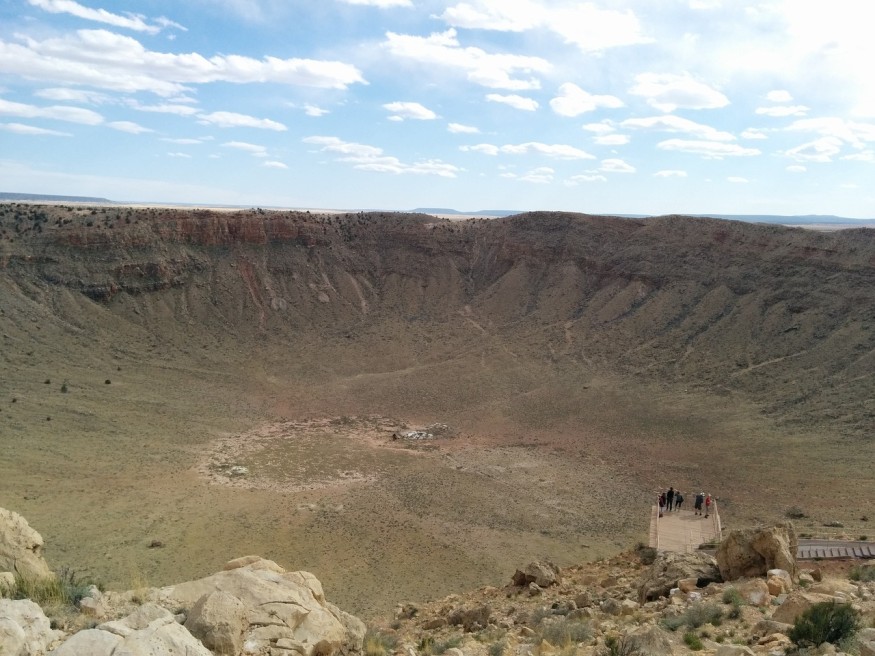An ancient meteor crater was found by researchers under a winery house in Southern France. The impact site contained microdiamonds not seen for a long time in the area. This is according to a new research that reveals the Domaine du Meteore winery's vineyard is held by a circular, old impact crater. The winery's officials estimate the hole is several thousand years old.
The said meteor crater was first discovered in 1950. However, a 1964 study contradicted the identification since the crater had no identifiable elevated rim, and the scientists who found the site had no evidence of magnetic field anomalies, which impact sites often contain, according to reports. Now the 2023 study is proving once again that initial site for the crater was a result of a space rock hitting Earth.
Ancient Meteor Crater

The meteor strike that caused the ancient meteor crater in France approximately dates back to 10,000 years ago, according to the winery's website Domaine du Meteore. Still, the new research has not provided the exact or estimated age of the crater.
However, the researches involved in the study, which will report their findings at the 54th Lunar and Planetary Science Conference in mid-March at The Woodlands, Texas, have determined the presence of melted and re-solidified rock, including microdiamonds, at the crater.
Officially known as Domaine due Meteore crater, the ancient crater measures 656 feet (200 meters) across and 98 feet (30 meters) deep. The findings revolved around a shock caused by an immense impact, which can only point out to meteorites.
Meteorite Impacts
Meteorite impacts occur when a rocky, metallic, or icy space rock orbiting the Sun entered the Earth's atmosphere and hits the surface that ha according to the University of California, Berkeley. In short, meteorites can either be asteroids, comets, or meteroids.
Meanwhile, meteors (sometimes called as fireballs) are the same space objects that are small, which makes them susceptible to complete vaporization in the atmosphere. The disintegration of meteors, space rocks that burn up in our atmosphere, prevents it from colliding with Earth's surface, the California university adds.
With this, large impact leave craters, and the biggest impacts, such as the Chicxulub impactor in Yucatan Peninsula, Mexico, that killed all non-avian dinosaurs 66 million years ago, can cause significant changes in the atmosphere (air), biosphere (land), and hydrosphere (water).
Impact Craters
Impact craters from large space objects have defined Earth's prehistoric journey after forming approximately 4.5 billion years ago, along with the solar system; where remnants of formed planets can be found.
On Earth, the oldest and largest impact crater is called the Vredefort, located about 100 kilometers (60 miles) from Johannesburg, South Africa, which formed approximately over 2 billion years ago. The crater has underwent extensive erosion, but scientists believe it had a maximum radius of up to 300 kilometers (185 miles), according to the Lunar and Planetary Institute (LPI).
Related Article: Arizona's Meteor Crater Gives Experts Clues to Past Armageddons
© 2025 NatureWorldNews.com All rights reserved. Do not reproduce without permission.





